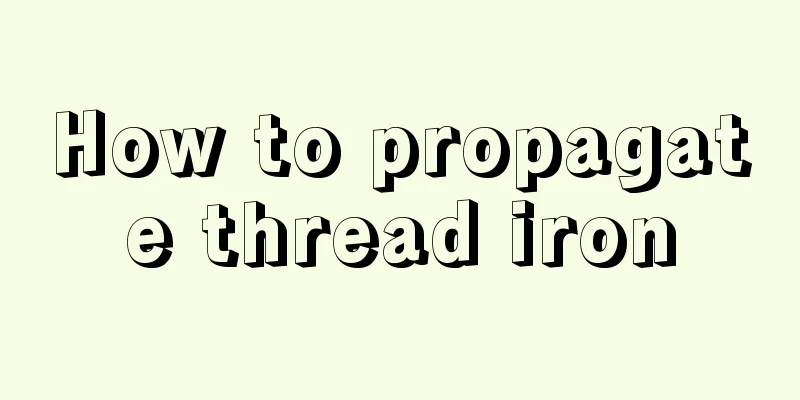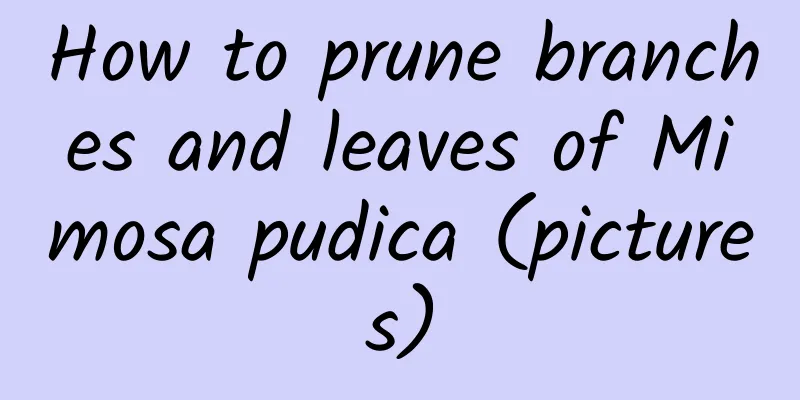How to propagate thread iron

Cutting propagationThe suitable time for cuttings of thread iron is generally between March and October. When cuttings, place the cuttings with the buds facing upwards and insert them into the soil at a slight angle. The cutting depth should be about 1/2-2/3 of the cuttings. Management after cuttingWater thoroughly immediately after planting. The moisture content of the cutting medium should be around 60%, and the relative humidity should be maintained between 80% and 90%. Pay attention to replenishing water in time. Callus tissue can usually be formed after half a month. At this time, in order to facilitate rooting, you can begin to gradually reduce the amount of watering. It is best to keep the temperature 3-6℃ lower than the substrate temperature. You can use a film to cool down and keep moisturizing. The suitable temperature for rooting cuttings is about 20-25℃. If the temperature is above 30℃, ventilation is needed at noon and water spray is used to cool down. After planting, you should spray with 65% mancozeb or 800 times diluted 50% carbendazim. Generally, spray once every 5 days, especially after rain, remember to spray in time. After the cuttings take root, you can gradually reduce the number of spraying times. After the callus tissue is formed, foliar fertilizer is needed once a week, and in the later stage, a mixture of 0.2% to 0.5% urea and potassium dihydrogen phosphate can be sprayed. Cutting seedling cultivationAfter the cuttings have grown for half a year, they can be transplanted when they are about 15-20 cm in length. Transplanting is generally carried out in spring and autumn, with the suitable time being between February to May and September to October. When transplanting, you should choose a place with a shade density of 60%-70%, a water source, and stone with moss to increase the survival rate. It is generally best to use the clamp nail method for cultivation. Use steel nails to compact the threaded iron roots, then clean the root system, retain other mosses, increase moisture content, and thus improve the survival rate. |
>>: Fertilization method of horse hoof gold
Recommend
What fertilizer is good for taro topdressing?
Time for topdressing taro The amount and frequenc...
What are the matching flowers?
1. Baby's breath Gypsophila is a common match...
Can bentonite be used as fertilizer? Can it be used to grow flowers?
Bentonite, also known as bentonite and soap clay,...
How to grow the succulent Jade Butterfly into an old pile
Choice of Clay Basin If you want to grow plants, ...
How to save ginger seeds
Ginger Seed Introduction Ginger has seeds. Genera...
Cultivation methods and precautions of red plum blossoms
Red plum blossom is a type of plum blossom. It pr...
How to care for newly bought Osmanthus fragrans
1. How to deal with the newly bought Osmanthus fr...
The growing environment and local conditions of water spinach
Water spinach growing environment and conditions ...
How to make lilies bloom longer and how to keep them during the flowering period
1. How to make lilies bloom longer 1. Add a small...
Onion planting method and growth time Onion growth process and planting technology
The best time to plant onions is around September...
Where do lotus seeds come from?
Where do lotus seeds come from? Lotus seeds are l...
Is the peony a shade-loving or sun-loving plant?
Does peony prefer shade or sun? Peony is a sun-lo...
What are the cultivation methods and precautions of peony?
Peony growth habits Peony belongs to the Paeoniac...
Cultivation methods and maintenance matters of old Schefflera chinensis piles
Cultivation method of old Schefflera chinensis pi...
The difference between plum blossoms and pear blossoms
1. Differences between families and genera Plum b...









